
Look, I’ve worked with hundreds of business owners over the years, and I can tell you that figuring out your company’s worth has become absolutely critical. With over 99% of all businesses in America classified as small businesses, knowing your company’s true value isn’t some academic exercise you can put off until later.
Here’s the thing – whether you’re thinking about selling, bringing in investors, or just want to track how you’re doing as an entrepreneur, understanding your business value drives every major strategic decision you’ll make. The challenge? Most business owners have no clue where to start or which methods actually give them reliable numbers.
I can’t tell you how many times I’ve seen business owners completely guess at their company’s worth – usually way off in either direction. Some think their baby is worth millions when it’s not, others are sitting on goldmines and don’t even know it.
Table of Contents
-
Modern Valuation Methods That Actually Work
-
Financial Analysis and Due Diligence Deep Dive
-
Technology-Enhanced Valuation Tools
-
Strategic Implementation and Value Enhancement
-
Regulatory and Compliance Considerations
-
Final Thoughts
TL;DR
-
Income-based methods (DCF, earnings capitalization) are your bread and butter – they focus on actual cash flow generation
-
Market-based approaches show you what buyers are really paying for similar businesses
-
Asset-based techniques give you a floor value through your actual stuff
-
Quality financial analysis needs 3-5 years of cleaned-up data and realistic earnings adjustments
-
AI-driven tools are game-changers for accuracy and speed, but they can’t replace understanding your own business
-
Value enhancement strategies focus on growing revenue, cutting smart costs, and reducing risks
-
Industry-specific stuff matters way more than most people think
-
Professional standards (USPAP, IRS guidelines) determine when you need the fancy formal appraisals
Modern Valuation Methods That Actually Work
The world of small business valuation has completely changed over the past few years. I’ve watched traditional methods get supercharged by new technologies and market dynamics, creating opportunities for way more accurate valuations than we’ve ever had before.
What I’ve discovered is that combining solid financial analysis with modern data-driven insights gives you the most realistic picture of what your company is actually worth. The trick is knowing which method works best for your specific situation and industry – because there’s definitely no one-size-fits-all approach here.
Income-Based Valuation Approaches
These methods focus on one simple question: how much money can your business actually generate? Most professional appraisers start here because, let’s be honest, that’s what investors really care about most – not your fancy office or how passionate you are about your business.
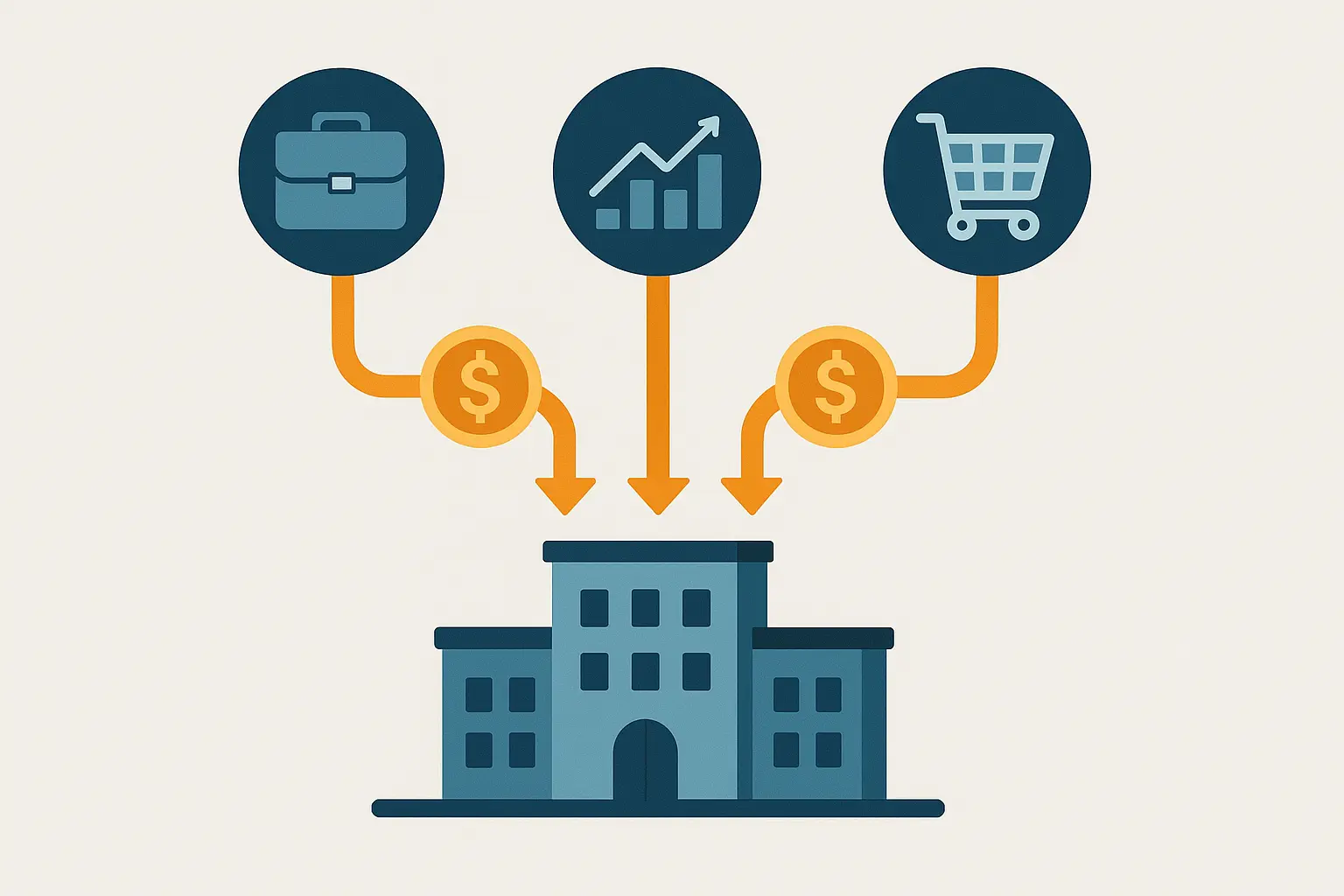
Discounted Cash Flow (DCF) Analysis
DCF analysis is like the gold standard of business valuation, and for good reason. It looks at your future cash flows and figures out what they’re worth today using a risk-adjusted rate. Yeah, the math gets a bit complex, but it gives you the most complete picture of what your business is actually worth intrinsically.
Here’s how I break it down for clients:
-
Project 5-10 years of free cash flows based on realistic growth assumptions (and I mean realistic, not your wildest dreams)
-
Figure out the right discount rate (usually your weighted average cost of capital)
-
Calculate terminal value for cash flows beyond the projection period
-
Add up the present values of all projected cash flows
The beautiful thing about DCF? You’re not just looking backward at last year’s numbers. You’re valuing the business’s future earning potential. This business value calculation method gives you a comprehensive view that other approaches might totally miss.
Take my client Sarah – she runs a consulting firm that generated $200,000 in cash flow last year. She’s pretty confident about 8% annual growth for five years, then 3% perpetual growth after that. Using a 12% discount rate, here’s what we calculated:
-
Year 1: $216,000 / 1.12 = $192,857
-
Year 2: $233,280 / 1.25 = $186,624
-
Year 3: $252,142 / 1.40 = $180,102
-
Year 4: $272,314 / 1.57 = $173,503
-
Year 5: $294,099 / 1.76 = $167,102
-
Terminal Value: ($302,922 / 0.09) / 1.76 = $1,913,043
Total DCF Value: $2,713,231
Sarah almost fell off her chair. She had no idea her little consulting firm was worth that much.
Capitalization of Earnings Method
This one’s way simpler – you take your normalized annual earnings and divide by a capitalization rate to determine business value. It works great for stable businesses with predictable earnings patterns that aren’t going to surprise you with wild swings.
When calculating your business value, understanding proper revenue calculations becomes crucial for accurate earnings normalization. You need clean, reliable numbers to make this method work effectively.
The process is dead simple:
-
Calculate your normalized annual earnings (removing one-time items and owner perks)
-
Determine an appropriate cap rate based on business risk and growth prospects
-
Divide earnings by the cap rate to get your business value
For example, if your normalized earnings are $500,000 and your cap rate is 20%, your business value would be $2.5 million. Simple math, but getting those normalized earnings right? That’s where the real work happens.
According to Phoenix Strategy Group, average SDE multiple ranges are 1.5x to 3.0x for small businesses, providing a reality check for earnings-based valuations.
Revenue Multiple Approach
This method uses industry-specific revenue multiples to quickly estimate value. It’s your quick-and-dirty approach, especially useful when you need a ballpark figure for how to value a business fast.
But here’s the thing – revenue multiples vary like crazy by industry. SaaS companies might trade at 5-10x revenue, while traditional retail might only get 0.5-1.5x revenue. The key is finding accurate, recent multiples for businesses that actually look like yours.
|
Industry |
Typical Revenue Multiple |
SDE Multiple Range |
EBITDA Multiple Range |
|---|---|---|---|
|
Professional Services |
0.8x – 2.0x |
2.0x – 4.0x |
3.0x – 6.0x |
|
Manufacturing |
0.5x – 1.5x |
1.5x – 3.0x |
2.5x – 5.0x |
|
Technology/SaaS |
3.0x – 8.0x |
3.0x – 6.0x |
4.0x – 10.0x |
|
Retail |
0.3x – 1.0x |
1.0x – 2.5x |
2.0x – 4.0x |
|
Healthcare |
0.8x – 2.5x |
2.5x – 4.5x |
3.5x – 7.0x |
Market-Based Valuation Methods
These approaches use real market data from comparable transactions and public companies to establish value benchmarks. I love these because they cut through all the theory and show you what buyers are actually paying in the current market.
Comparable Company Analysis
This method analyzes publicly traded companies in similar industries to derive valuation multiples. Now, public companies often trade at premiums to private businesses, but the multiples give us useful benchmarks when we adjust them appropriately.
I hunt for companies with similar:
-
Business models and revenue streams
-
Growth rates and profitability margins
-
Market positions and competitive advantages
-
Geographic footprints and customer bases
Just look at what’s happening right now – OpenAI’s $500 billion valuation shows how AI and technology companies are commanding absolutely insane multiples in today’s market environment. This demonstrates how market conditions can dramatically shift what buyers are willing to pay for company valuation.
Precedent Transaction Analysis
This examines recent sales of similar private businesses to establish market-based valuation ranges. It’s often way more relevant than public company data because it reflects actual transaction prices for comparable private companies.
The challenge is finding reliable transaction data. Most private sales aren’t publicly disclosed, and when they are, the details might be pretty limited. However, industry databases and business brokers can provide valuable insights if you know where to look.
Research shows that in 2024, small businesses typically sold for about 0.67× annual revenue or 2.57× annual profit, according to Capsule CRM’s analysis of recent transaction data. That gives you a reality check on your expectations.
Asset-Based Valuation Techniques
These methods focus on the underlying assets and liabilities of your business, providing a floor value for the enterprise. They’re particularly relevant for asset-heavy businesses or when liquidation might be a possibility you need to consider.
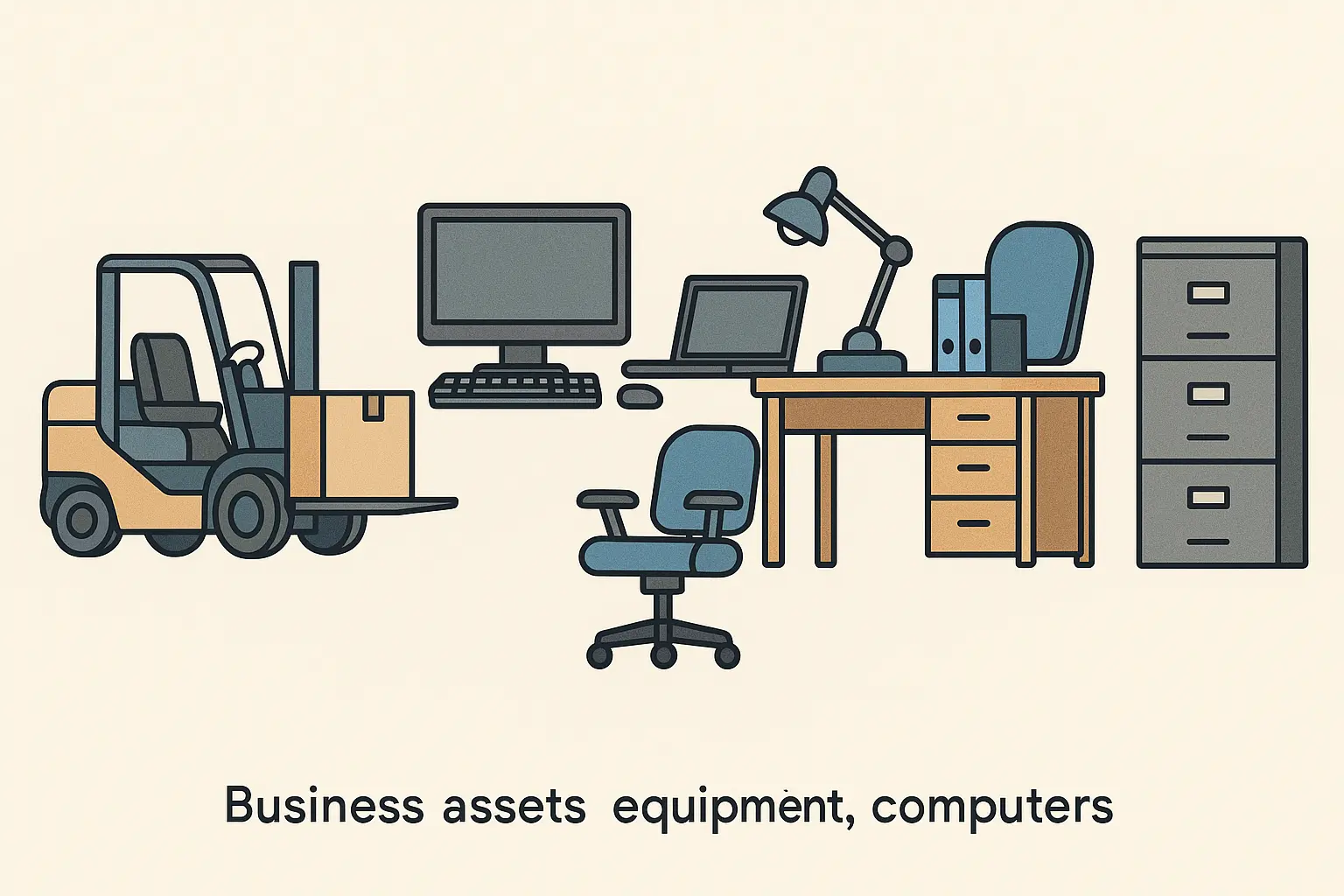
Book Value Method
This uses your accounting book values adjusted for current market conditions and asset appreciation. It’s the starting point for asset-based valuations, though it rarely reflects the true market value of a company.
You’ll need to adjust book values for:
-
Real estate appreciation or depreciation (this can be huge)
-
Equipment that’s fully depreciated but still valuable
-
Intangible assets not recorded on the books
-
Obsolete inventory or equipment that’s basically worthless
Liquidation Value Analysis
This determines what you’d receive if you had to sell all assets individually in a forced sale scenario. It represents the absolute floor value of your business and is crucial for understanding your downside risk.
Liquidation values are typically 20-50% of fair market value, depending on what kind of assets you’re dealing with. Equipment might fetch 30-40% of replacement cost, while inventory could be worth anywhere from 10-60% depending on its nature and how fast it moves.
Financial Analysis and Due Diligence Deep Dive
Here’s where we get into the real nitty-gritty. You can’t value a business properly without really digging into its financial story – and I mean the real story behind those numbers, not just what looks good on paper.
This isn’t about glancing at last year’s P&L and calling it done. You need to understand what actually drives your revenue, where your costs really come from, and what trends are shaping your business’s future.

Historical Performance Assessment
I always look at 3-5 years of financial data to spot trends, normalize earnings, and figure out if the business is actually stable. This historical perspective is crucial for understanding whether current performance is sustainable or if there are underlying issues that could bite you later.
For comprehensive financial tracking, implementing a proper Google Analytics audit helps ensure you’re capturing all revenue streams and performance metrics accurately. You can’t value what you can’t measure properly, trust me on this one.
Revenue Analysis and Normalization
I examine revenue streams for sustainability, growth patterns, and one-time items that need adjustment. Understanding the quality and predictability of your revenue is absolutely fundamental to accurate business valuations.
Here’s what I actually do:
-
Analyze revenue by source and seasonality to understand diversification and timing patterns
-
Identify and remove non-recurring items that won’t repeat in the future
-
Assess customer concentration risk (what happens if you lose your biggest client?)
-
Project sustainable revenue levels based on historical trends and realistic market conditions
Customer concentration is particularly scary. If 30% of your revenue comes from one client, that’s a massive risk factor that will definitely impact your valuation multiple.
My Due Diligence Checklist:
-
☐ 3-5 years of profit & loss statements
-
☐ Balance sheets for same period
-
☐ Tax returns (business and personal if relevant)
-
☐ Customer concentration analysis
-
☐ Revenue seasonality patterns
-
☐ Recurring vs. one-time revenue breakdown
-
☐ Accounts receivable aging
-
☐ Customer retention rates
Expense Structure Optimization
I review your cost structure to identify normalized operating expenses and potential efficiencies. Buyers want to understand what expenses are truly necessary to run the business versus what might be owner preferences or one-time costs.
I categorize expenses into:
-
Fixed costs that won’t change with new ownership
-
Variable costs that scale with revenue
-
Owner-specific expenses that a new owner might eliminate
-
One-time or unusual expenses that should be adjusted out
Working Capital Assessment
This evaluates current assets and liabilities to determine how much cash the business needs to operate effectively. This directly impacts the cash available to new owners and affects the final purchase price.
Working capital requirements vary hugely by industry and business model. A consulting firm might need minimal working capital, while a manufacturing business could require significant inventory and accounts receivable to keep the lights on.
Quality of Earnings Analysis
This is where we separate the real profits from accounting tricks and one-time events. It’s about separating the signal from the noise in your financial statements, and trust me, there’s usually a lot of noise.
According to Phoenix Strategy Group, EBITDA multiples typically range from 3.00x to 5.00x for small businesses, making quality of earnings analysis crucial for accurate multiple application.
EBITDA Adjustments and Add-backs
Identifying legitimate adjustments shows the normalized earning power of your business. However, you need to be really careful here – not every expense you want to add back is legitimate from a buyer’s perspective when figuring out how to value a small business.
Common legitimate add-backs include:
-
One-time legal or consulting fees
-
Non-recurring equipment repairs or replacements
-
Excessive owner compensation above market rates
-
Personal expenses run through the business
Be cautious with add-backs for things like:
-
“Below market” rent (if you own the building)
-
Family members on payroll who don’t actually contribute
-
Expenses that might recur under new ownership
Take Mike’s manufacturing company – shows $300,000 EBITDA, but after adjustments including $50,000 in one-time equipment repairs, $25,000 in excessive owner salary, and $15,000 in personal expenses, his normalized EBITDA becomes $390,000. At a 4x multiple, this increases his valuation from $1.2M to $1.56M. That’s real money right there.
Owner Benefit Reconstruction
For owner-operated businesses, determining the true economic benefit available to a new owner requires careful analysis of how much the current owner actually extracts from the business in various forms.
This includes:
-
Base salary and bonuses
-
Benefits and perquisites
-
Distributions or dividends
-
Personal expenses paid by the business
-
Below-market transactions with related parties
The goal is to show what a new owner could reasonably expect to earn from the business.
Technology-Enhanced Valuation Tools
The tech revolution has completely transformed business valuation. AI, big data analytics, and automated platforms are making sophisticated analysis accessible to more business owners while dramatically improving the precision of our estimates.
But here’s the reality – technology enhances human judgment, it doesn’t replace it. You still need to understand your business and make informed decisions about assumptions and methodologies.
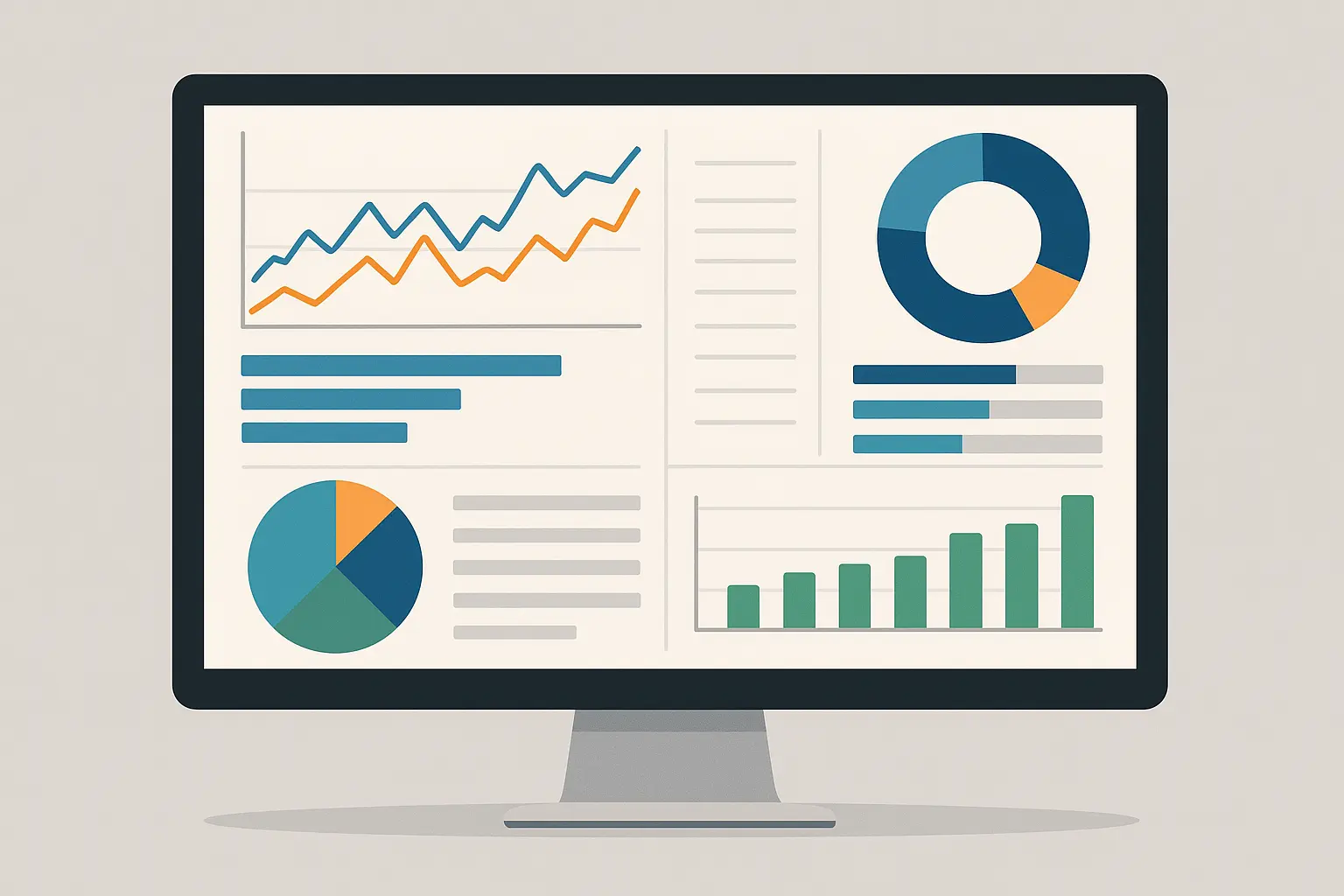
AI-Driven Market Analysis
Machine learning algorithms can crunch through massive datasets of comparable transactions and market conditions for way more precise valuations. These systems can spot patterns and relationships that human analysts might totally miss, leading to more accurate and defensible valuations.
The integration of AI-powered analytics enables more sophisticated pattern recognition in financial data and market trends. This technology helps you spot opportunities and risks that traditional analysis might completely overlook.
Predictive Analytics for Cash Flow Modeling
AI systems identify patterns in financial data to create way more accurate future cash flow projections. Instead of relying solely on straight-line projections or management wishful thinking, these tools can incorporate multiple variables and scenarios.
Here’s how I actually implement predictive analytics:
-
Input 5-10 years of historical financial data into the AI platform
-
Let the system identify revenue and expense patterns, seasonality, and correlations
-
Generate different ways your cash flow might play out with confidence intervals
-
Use Monte Carlo simulations to assess risk and uncertainty ranges
The advantage is getting probability-weighted valuations rather than single-point estimates. Instead of saying “your business is worth $2.5 million,” I can tell you “there’s a 70% chance your business is worth between $2-3 million, with a 15% chance it’s worth more and a 15% chance it’s worth less.”
Real-Time Market Data Integration
Platforms that continuously update valuation multiples based on current market transactions and economic conditions provide way more timely and relevant benchmarks. Market conditions change crazy fast, and static multiples from last year might not reflect today’s reality at all.
These systems track:
-
Recent transaction multiples by industry and size
-
Public company trading multiples
-
Economic indicators that affect valuations
-
Interest rate changes that impact discount rates
Automated Comparable Analysis
Systems that automatically identify and analyze comparable companies and transactions using advanced matching algorithms save you significant time while improving consistency. Instead of manually searching for comparables for hours, AI can quickly identify the most relevant matches based on multiple criteria.
The algorithms consider:
-
Industry classification and business model similarity
-
Revenue and profitability ranges
-
Geographic markets served
-
Growth rates and business maturity
|
Technology Tool |
Primary Function |
Accuracy Improvement |
Time Savings |
Cost Range |
|---|---|---|---|---|
|
AI Comparable Analysis |
Automated comp identification |
25-30% |
60-70% |
$500-2,000/month |
|
Predictive Cash Flow Models |
Future earnings projection |
20-25% |
40-50% |
$1,000-5,000/month |
|
Real-time Market Data |
Current multiple tracking |
15-20% |
30-40% |
$300-1,500/month |
Digital Documentation and Reporting
Modern platforms provide comprehensive digital trails and professional reporting capabilities that enhance credibility and transparency. This is particularly important when you need to defend your valuation to potential buyers, lenders, or for legal purposes.
Blockchain-Verified Transaction Records
This emerging technology provides unchangeable records of valuation assumptions and methodologies. While still developing, blockchain verification could become really important for high-stakes valuations where the methodology might be challenged later.
This technology creates an unchangeable record of:
-
Data sources used in the valuation
-
Assumptions and adjustments made
-
Methodology selection rationale
-
Final valuation conclusions
Interactive Valuation Dashboards
Real-time platforms allow stakeholders to adjust assumptions and see immediate impacts on valuation. This transparency helps build confidence in the valuation process and allows for scenario analysis that’s actually useful.
These dashboards typically let you adjust:
-
Growth rate assumptions
-
Discount rates and risk factors
-
Comparable company selections
-
Add-back and normalization adjustments
You can immediately see how changes in key assumptions affect your business value, which is absolutely invaluable for strategic planning and negotiations.
Strategic Implementation and Value Enhancement
Here’s where it gets really exciting – figuring out specific strategies to make your business worth more and maximize your returns. The most valuable valuation exercises don’t just tell you what your business is worth today – they show you exactly how to make it worth way more tomorrow.
Value creation requires a systematic approach. You can’t just hope your business becomes more valuable – you need to actively work on the specific factors that drive valuation multiples higher.

Value Driver Identification
Systematic analysis of factors that most significantly impact business value enables targeted improvement strategies. Not all business improvements create equal value, so focusing on the highest-impact areas gives you the best return on your investment of time and resources when learning how to value a small business.
Revenue Enhancement Opportunities
Identifying scalable revenue streams and market expansion possibilities can significantly increase business value. Revenue growth typically has the highest impact on valuation, especially when it comes with maintained or improved margins.
Understanding market sizing and business opportunities becomes crucial when evaluating expansion potential and revenue enhancement strategies. You need to know where the real growth opportunities actually exist.
Here’s what I actually do with clients:
-
Analyze customer acquisition costs and lifetime values to identify your most profitable segments
-
Identify underserved market segments where you have competitive advantages
-
Evaluate pricing optimization opportunities (often the fastest way to increase value)
-
Assess digital transformation potential to reach new markets or improve efficiency
Pricing optimization deserves special attention here. A 5% price increase often flows directly to the bottom line, potentially increasing business value by 20-30% if margins improve significantly.
Revenue Enhancement Checklist:
-
☐ Customer lifetime value analysis completed
-
☐ Pricing strategy review and optimization
-
☐ New market segment identification
-
☐ Digital channel development plan
-
☐ Recurring revenue model evaluation
-
☐ Cross-selling and upselling opportunities mapped
-
☐ Customer retention program implementation
Operational Efficiency Improvements
Finding cost reduction and process optimization opportunities directly impacts bottom-line value. However, you need to be strategic here – cutting costs that hurt growth or competitive position can actually decrease value.
Focus on improvements that:
-
Reduce costs without impacting quality or customer experience
-
Automate repetitive processes to free up resources for growth
-
Eliminate bottlenecks that constrain revenue growth
-
Improve asset utilization and working capital efficiency
Take Jessica’s digital marketing agency – she implemented automated client reporting tools, reducing manual work by 15 hours per week. This allowed her team to take on three additional clients without hiring new staff, increasing annual revenue by $180,000 and boosting her business valuation by approximately $540,000 at a 3x revenue multiple. That’s a massive return on a relatively small process improvement.
Risk Mitigation Strategies
Addressing key business risks that may be discounting current valuation multiples can have immediate impact on value. Buyers pay serious premiums for businesses with lower risk profiles, so risk reduction often provides outsized returns.
Common risk factors to address:
-
Customer concentration (diversify your customer base)
-
Key person dependency (document processes and cross-train staff)
-
Supplier concentration (develop alternative sources)
-
Regulatory or competitive threats (build defensive moats)
Exit Strategy Planning
Developing comprehensive plans to maximize value realization when business owners are ready to exit requires years of preparation. The best exit strategies start 3-5 years before you actually want to sell, giving you time to implement value-enhancing strategies that actually work.
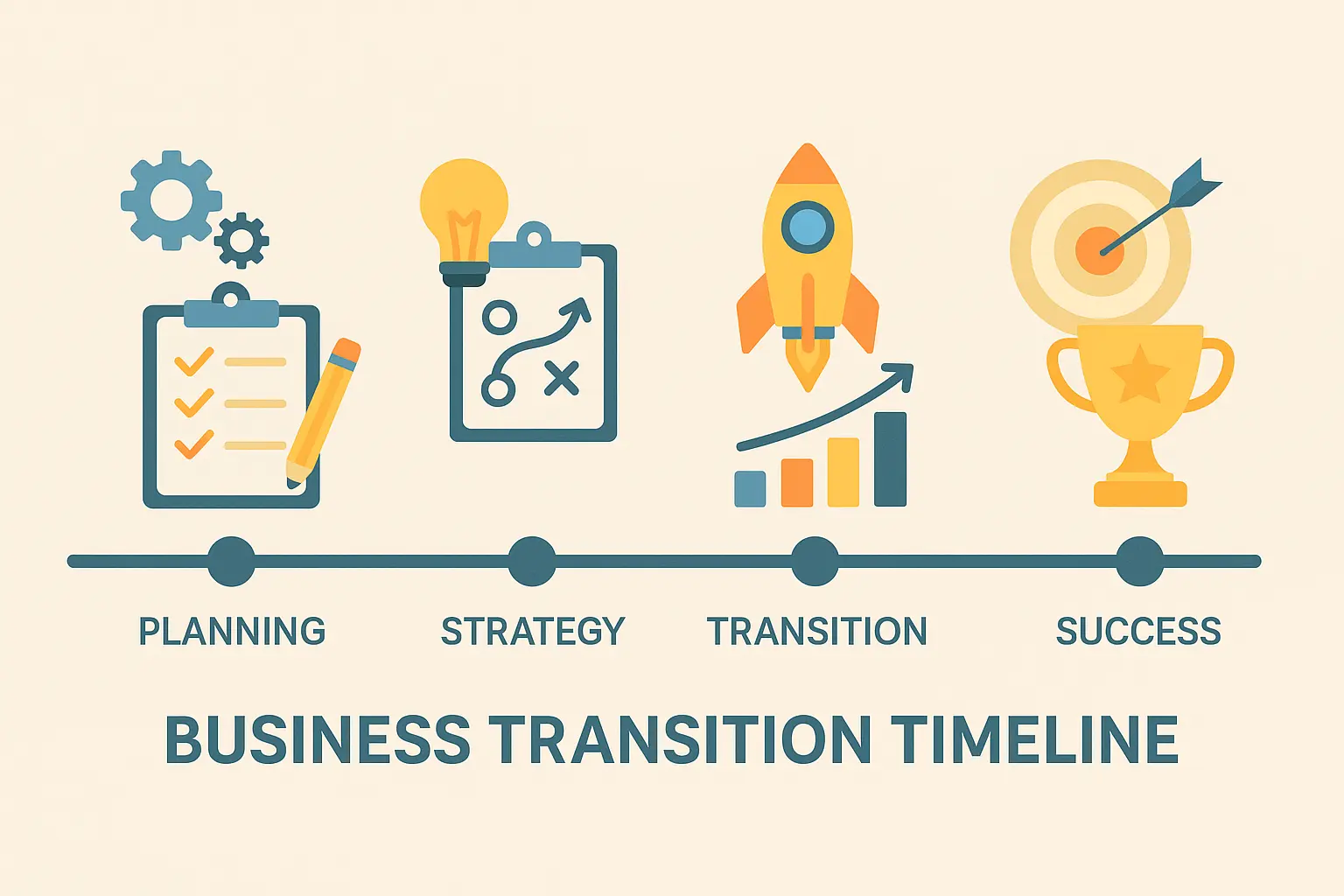
Strategic Buyer Identification
Mapping potential acquirers who would pay premium valuations due to synergistic benefits helps you understand your maximum potential value. Strategic buyers often pay 20-50% more than financial buyers because they can realize synergies that justify higher prices.
Strategic buyers might include:
-
Competitors looking to gain market share or eliminate competition
-
Suppliers or customers seeking vertical integration
-
Companies in adjacent markets wanting to expand their offerings
-
Larger firms needing your capabilities or geographic presence
Financial Buyer Positioning
Preparing businesses to attract private equity and other financial buyers requires focusing on metrics and scalability factors these buyers prioritize. Financial buyers typically focus on cash flow generation and growth potential rather than strategic synergies.
Key factors financial buyers evaluate:
-
Consistent and growing EBITDA margins
-
Scalable business model with clear growth opportunities
-
Strong management team that can operate independently
-
Diversified customer base and revenue streams
-
Clean financial records and systems
The current market environment shows strong appetite for quality businesses, as evidenced by Kroll’s position as the largest independent provider of business valuation services, highlighting the increasing demand for professional valuation expertise in today’s complex market.
Regulatory and Compliance Considerations
Modern small business valuation has to navigate an increasingly complex regulatory environment. Understanding when professional appraisals are required and which standards apply can save you significant time, money, and serious legal headaches down the road.
The consequences of using inappropriate valuation methods or unqualified appraisers can be brutal, especially for tax-related purposes. Getting this wrong can cost you way more than doing it right from the start.
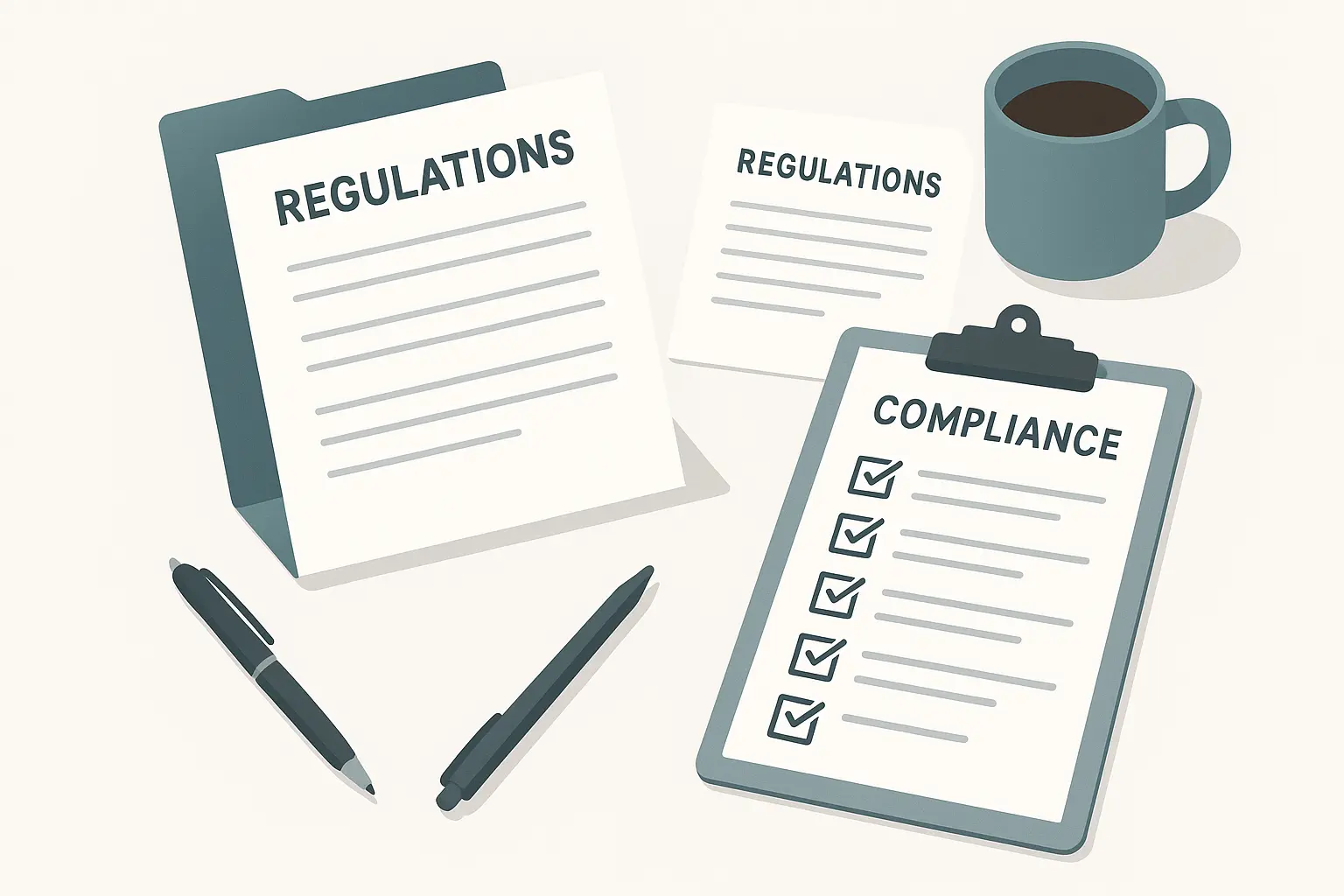
Professional Valuation Standards
Knowing when professional appraisals are required and which standards apply ensures your valuations meet legal and regulatory requirements. Understanding these distinctions helps you determine the appropriate level of valuation rigor for your specific situation when considering small business valuation methods.
USPAP Compliance Requirements
Uniform Standards of Professional Appraisal Practice govern when formal appraisals are mandatory versus when business valuations suffice. Understanding these distinctions helps you determine the appropriate level of valuation rigor for your specific situation.
USPAP compliance is typically required for:
-
Litigation support and expert testimony
-
Financial reporting for public companies
-
Regulatory filings and compliance
-
Some tax-related valuations
For most business planning purposes, you can use less formal valuation approaches, but it’s really important to understand when you need the full USPAP treatment.
IRS Valuation Guidelines
Specific requirements for tax-related valuations include gift and estate planning, ESOP transactions, and charitable contributions. The IRS has detailed guidelines for these situations, and non-compliance can result in serious penalties and additional taxes.
Key IRS considerations:
-
Fair market value standard for most tax purposes
-
Specific documentation requirements
-
Qualified appraiser requirements for certain situations
-
Penalties for substantial or gross valuation misstatements
Financial Reporting Standards (ASC 820)
Fair value measurement requirements for financial statement purposes and acquisition accounting have specific methodologies and documentation requirements. Public companies and those preparing audited financial statements must comply with these standards.
ASC 820 establishes a three-level hierarchy for fair value measurements:
-
Level 1: Quoted prices in active markets
-
Level 2: Observable inputs other than quoted prices
-
Level 3: Unobservable inputs (most small business valuations fall here)
Industry-Specific Valuation Nuances
Different industries require specialized knowledge of regulatory environments, risk factors, and value drivers that significantly impact valuation approaches. What works for a manufacturing company won’t necessarily work for a professional services firm or a healthcare practice – trust me on this one.
Professional Services Firms
Unique considerations for businesses dependent on key personnel include distinguishing between personal goodwill versus enterprise value. This distinction can dramatically affect valuation, especially in professional practices where clients follow specific individuals rather than the firm.
Key factors I evaluate:
-
Client relationships tied to specific professionals
-
Non-compete agreements and their enforceability
-
Transferability of client relationships
-
Institutional systems and processes versus personal relationships
The challenge is determining how much value would remain if key professionals left the business.
Technology and SaaS Companies
Specialized metrics such as recurring revenue multiples, churn rates, and intellectual property valuations require different approaches than traditional businesses. These companies often trade at higher multiples but face unique risks around technology obsolescence and competitive threats.
Critical SaaS metrics include:
-
Monthly recurring revenue (MRR) and annual recurring revenue (ARR)
-
Customer acquisition cost (CAC) and lifetime value (LTV)
-
Churn rates and net revenue retention
-
Gross margins and unit economics
Healthcare and Licensed Businesses
Regulatory compliance costs, licensing requirements, and reimbursement model impacts significantly affect valuation. These businesses face unique regulatory risks that can dramatically impact value literally overnight.
Specific considerations:
-
Regulatory compliance costs and risks
-
Reimbursement rate changes and payer mix
-
Professional licensing and credentialing requirements
-
HIPAA and other privacy regulation compliance
Steps for industry-specific analysis:
-
Research industry-specific valuation multiples from reliable sources
-
Identify regulatory risks and quantify compliance costs
-
Assess competitive moats and barriers to entry in your specific industry
-
Evaluate industry growth trends and potential disruption risks
Understanding these industry nuances can mean the difference between an accurate valuation and one that’s significantly off the mark.
When evaluating business performance metrics, utilizing proper ROI calculation methods ensures you’re measuring the true return on investments that drive business value.
Now, here’s where The Marketing Agency can help address a critical challenge many business owners face: How do you actually implement the revenue enhancement strategies that increase your business value?
We’ve seen countless businesses with solid fundamentals that are undervalued because they haven’t maximized their revenue potential. Our data-driven marketing approach directly targets the value drivers that professional valuators examine most closely.
Through our AI-powered analytics and performance-focused strategies, we help you build the diversified, scalable revenue streams that command premium valuations. Whether it’s reducing customer concentration risk through multi-channel acquisition or demonstrating sustainable growth patterns that support higher multiples, our transparent approach gives you the documented performance history that buyers want to see.
Ready to start building measurable value in your business? We can show you exactly how strategic marketing investments translate into higher business valuations.

Final Thoughts
Small business valuation isn’t about slapping a number on your company – it’s about understanding what drives that number and how you can actually influence it. I’ve walked you through the comprehensive landscape of modern valuation, from traditional income and market-based approaches to cutting-edge AI-driven tools that are revolutionizing how we assess business worth.
Here’s the key insight: valuation is both an art and a science, requiring careful analysis of financial data, market conditions, and industry-specific factors while leveraging technology to improve accuracy and efficiency. Whether you’re planning an exit, seeking investment, or simply want to understand your business better, the methodologies and strategies outlined here provide a roadmap for determining current value and actively enhancing it.
But here’s what I really want you to remember – the most valuable businesses aren’t just profitable, they’re predictable, scalable, and positioned for sustainable growth in their markets. Buyers don’t just buy profits; they buy predictable, growing profits with manageable risks.
The reality is, most business owners have no clue what their company is actually worth until they need to know – and by then, it’s often too late to do much about it. Don’t be that person. Start understanding your value drivers now, implement improvements systematically, and track your progress.
Whether you’re planning to sell in two years or twenty, knowing what your business is worth and how to make it worth more is one of the smartest investments you’ll ever make. The work you put into understanding and improving your business value today will pay serious dividends whether you sell tomorrow or hold onto your company for years to come.
Your future self will definitely thank you for it.



